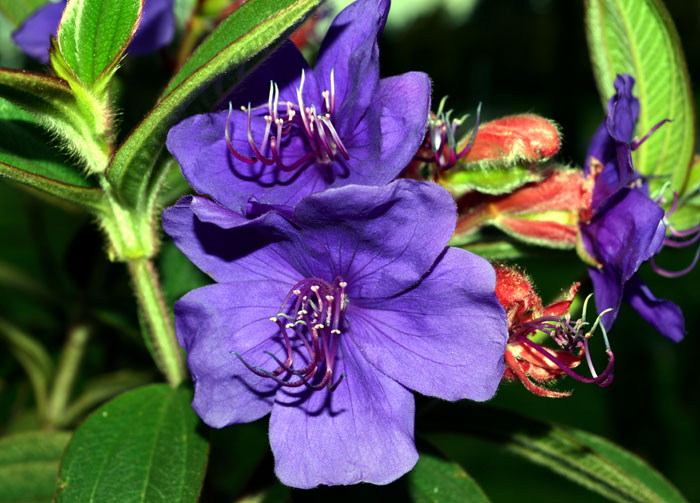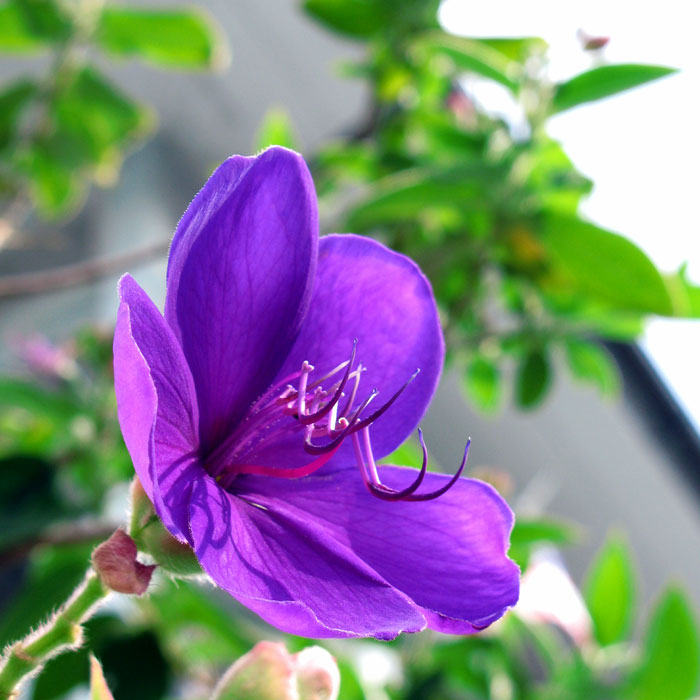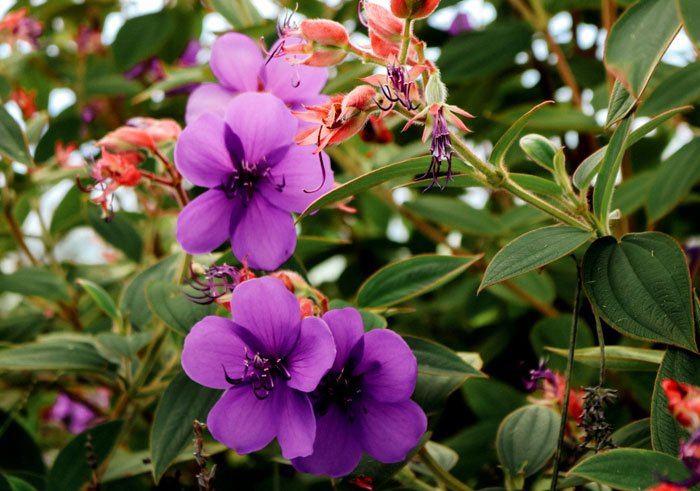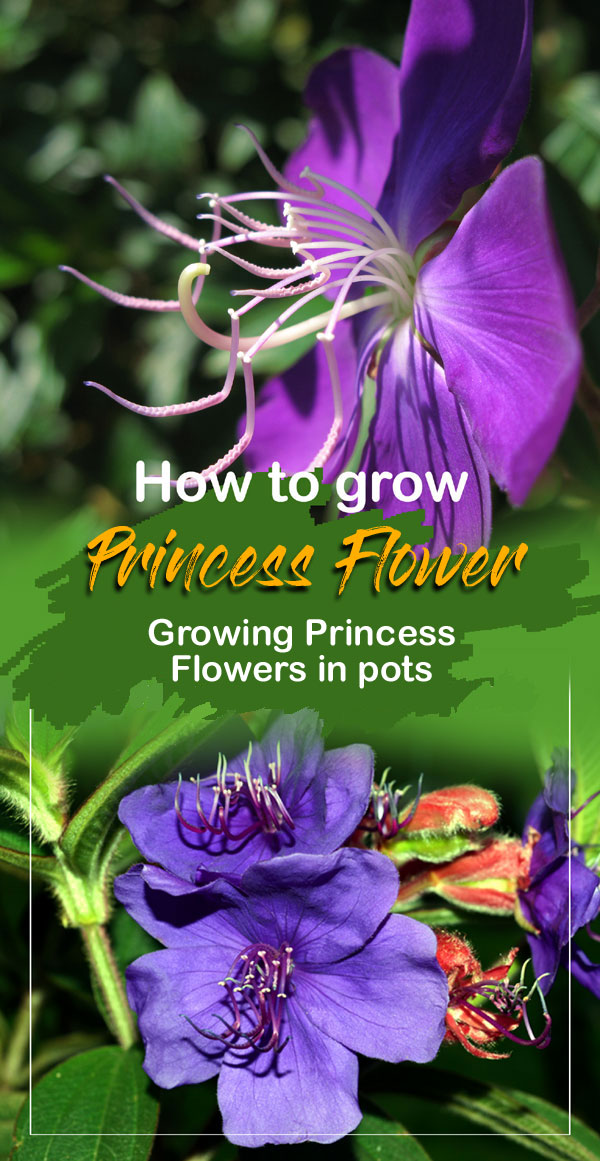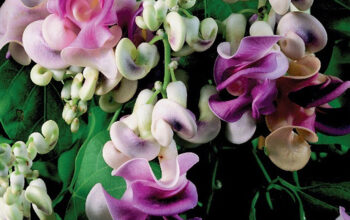Princess Flower (tibouchina urvilleana)
Princess Flower is an extra-tropical and subtropical attractive flowers, native to Brazil. Herbaceous perennials may be perennial shrubs depending on the different species of the wood stem. Its flowers are large and purple in color and the leaves are softly hairy. How to grow Princess Flower, Growing Princess Flower in pots, pleroma care, and pests diseases tibouchina urvilleana advice by our experts
Princess flowers are most attractive against a white wall with dark purple colors. Like many tall perennials, these flowers have the benefit of blooming for a long time, because the feet of these plants are in the shade and their heads are in the sun. The same is true of many other plants such as hibiscus and gardenia.
The average height of pleroma plants is 12–15 feet. But you can also plant it in the container. Keep potted Tibouchina urvilleana in the presence of the full sun, you can keep it as appropriate in the spring after the expected cold is over.
Overview of Princess Flowers
Scientific name Tibouchina urvilleana
Common name Princess flower, glory bush, lasiandra, and pleroma,
Plant type Flower shrub
Sun requires Full Sun
Blooming time Year-round
Flower colors Purple
Soil well-drained, Rich fertile, acidic soil
Soil pH 5.5 – 7.0
Zone 9-11
How to Grow Princess Flower
Soil and location
Princess flowers prefer well-drained, moist, and rich soil. These plants require regular watering, so well-drained soil is essential if your garden soil is heavy then mix good compost and sand for amendment. Root rot can cause damage to the plant if waterlogged in the soil. Princess flowers survive in the presence of the full sun, although it can tolerate partial shade, direct sunlight is required for at least six hours per day. If your area is particularly hot, glory bush plant should be protected from the afternoon sun.
Fertilizer
Tibouchina urvilleana thrive in fertile soil. Give your plant a dose of organic manure once a year, it will make the soil fertile. Feed the all-purpose fertilizer once a month during the growing season. Spring, summer, and autumn are the best times to fertilize your plants.
Watering
Pleroma plant is somewhat drought tolerant, but it is better to water regularly. During normal temperatures, weekly watering is sufficient, avoid overwatering, as too wet soil can cause damage to the plant.
Propagation
-
Propagation by seeds
These plants propagate by seeds. You can collect its seeds in late summer. For propagate, seeds use a seeding tray or shallow container. Use a good growing mixer of seeds.
-
Propagation by stem cutting
You can also grow princess flower plants with stem cuttings. In the autumn days, you should take 4-inch length softwood or hardwood cuttings. You fill the potting mixture in a 4-10 inch diameter container and planting its cutting. Immerse the cuttings in rooting hormones before planting, so that the root develops easily. Give water after planting and keep the plant in a light and warm area, avoid direct sun. Keep the soil moist, the root will develop in about 10-12 weeks, till then keep patience. Once the root system is well developed, plant it outside.
-
Plant by dividing
Propagate a new plant by dividing the pleroma plant. You can divide the clump when this plant becomes very dense in winter. Remove the root section from the soil with the help of a shovel, and cut the section. Then add organic manure well to the soil and plant it. Keep the soil uniformly moist,
and keep it in the area with direct sunlight.
Temperature
The normal room temperature is suitable for this during the growing period. In the middle of the winter, the temperature is about 10 °C- 15 °C is ideal. Pleroma plants like moisture so keep moisture around the plant. For Tibouchina Urvilleana place a pebble plate filled with water on the surface of the pot.
Pruning
Prune to maintain the correct size of the glory bush plant. Pinch off new growth to encourage plant growth and flower production. Remove dead flowers after blooming.
Growing Princess Flowers in pots
If you want to grow princess flowers in the container, then keep the container about 2-3 inches bigger than the root ball of the plant. These are shrub plants so choose containers according to the age and size of the root system. Too much soil in the container preserves moisture, and the plant may be at risk of root rot.
Make a surface with a pebble or broken clay pot on the drainage hole on the surface of the pot. Then fill it with a peat-based potting mixture.
After planting glory bush, place the pot in a place where it gets at least six to eight hours of sunlight. If you want to keep indoors then a sun window is a good option, where it can get sunlight every day. Keep the room temperature between 10 ° C- 15 ° C.
Pets and diseases glory bush
Pleroma plant is free from serious pests or diseases. Some common pests such as scale, aphids, and mealybug may appear, nematodes also attack it. You can get rid of them by using pesticide soap or neem oil. Sometimes. Drainage should be good, soggy soil can cause root-rot problems in the plant.
Read also: Growing Lima beans in your patio. Geranium growing and caring tips. Garlic vine growing in containers. Plumeria growing and caring guide. Growing Colchicum in your garden. CorianderGrowing and care in containers. Freesia flowers growing and care guide. 11 Best winter flowers for your garden. lily growing tips. Begonia Houseplant growing guide. Best flowers for Bees and Butterfly. Growing Peanuts at home. Why Tomatoes are not ripening. Know how to grow Pansy flowers. Anthurium plant Growing indoors.
Happy gardening
For Pin

